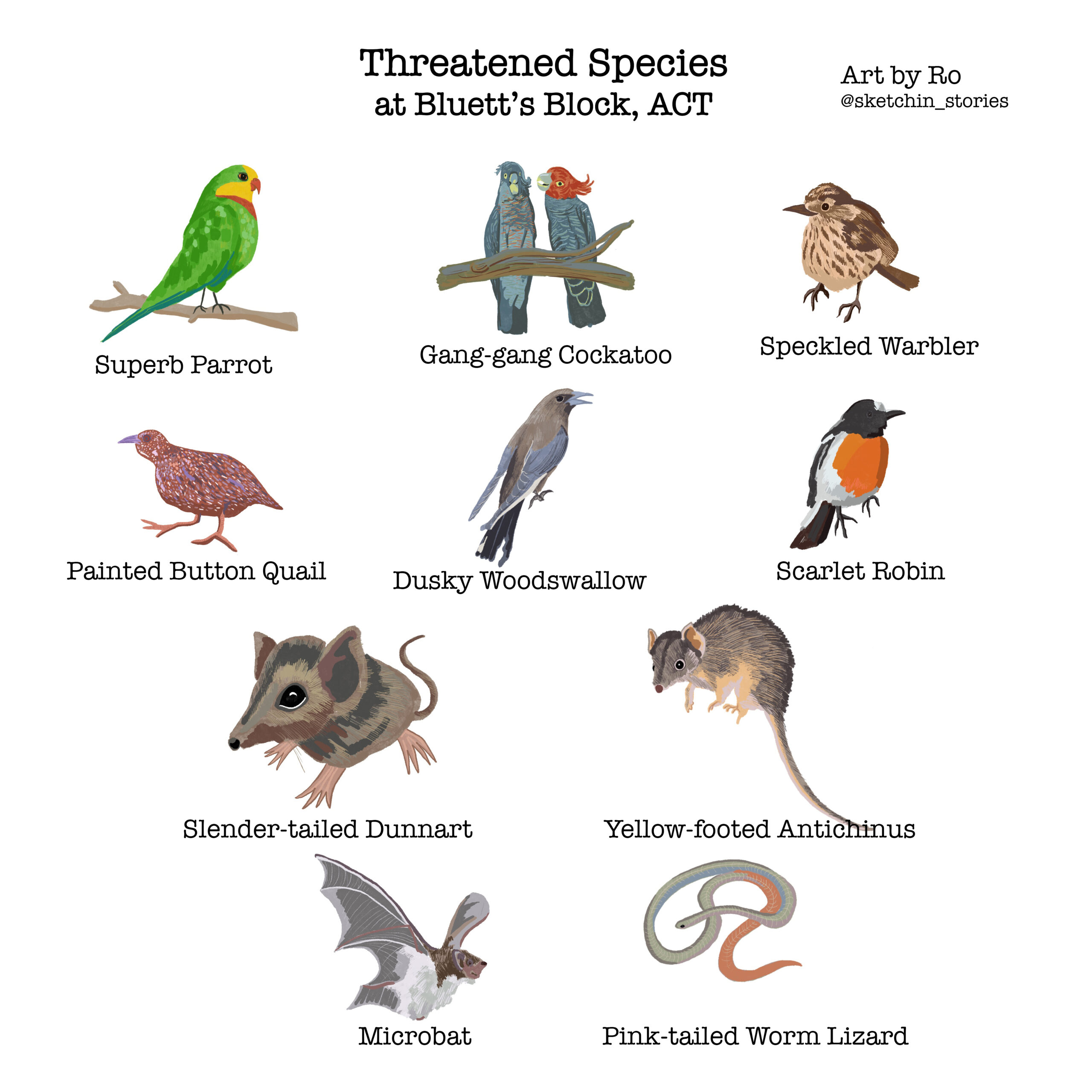
Protect Ngununggula/ Bluetts Block
The ACT Government has taken important steps to turn parts of Ngununggula/Bluetts Block into a nature reserve. However, there is more work to be done to protect all of this land!
Ngununggula/Bluetts Block is home to over 100 plant species as well as rare marsupial populations of Dunnart and Antechinus. A birding hotspot, it provides habitat for the endangered Superb Parrot, Gang-gang Cockatoo, and many more woodland birds – which we know are facing steep decline.
In addition to its extraordinary biodiversity, Ngununggula/Block – Piney Ridge is important because it provides landscape connection from the Murrumbidgee River Corridor to Kama Nature Reserve, Pinnacle Nature Reserve, and Stoney Creek Reserve. Landscape connections allow animals to move safely into different areas to breed and forage. Without connectivity across the landscape, many species cannot find food, water or shelter when they need it, leaving them vulnerable.
Update on Bluetts Block.
All of Ngununggula/Bluetts Block deserves to be a nature reserve!
The ACT Government have recently announced that they intend to declare two out of three blocks of the diverse woodlands of Ngununggula/Bluetts Block as a Nature Reserve.
However, the area still faces significant pressure from nearby development, and we continue to call for the final sections of the block to be added to this reserve.
Find out more about what is happening at Bluetts here.
Details on how to get to Ngununggula/Bluetts Block
Directions: From John Gorton Drive, turn into Opperman Ave, at the roundabout entrance to Stromlo Leisure Centre turn right into Uriarra Road. After about 3km you’ll see a parking area on your right and a gate with “BB”. The map below indicates red for the gate and green for the car spaces.

Join our Newsletter
Stay updated on our news and events
"*" indicates required fields

